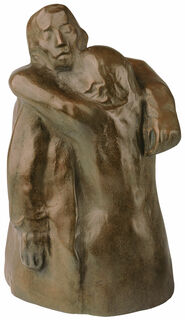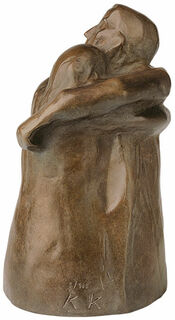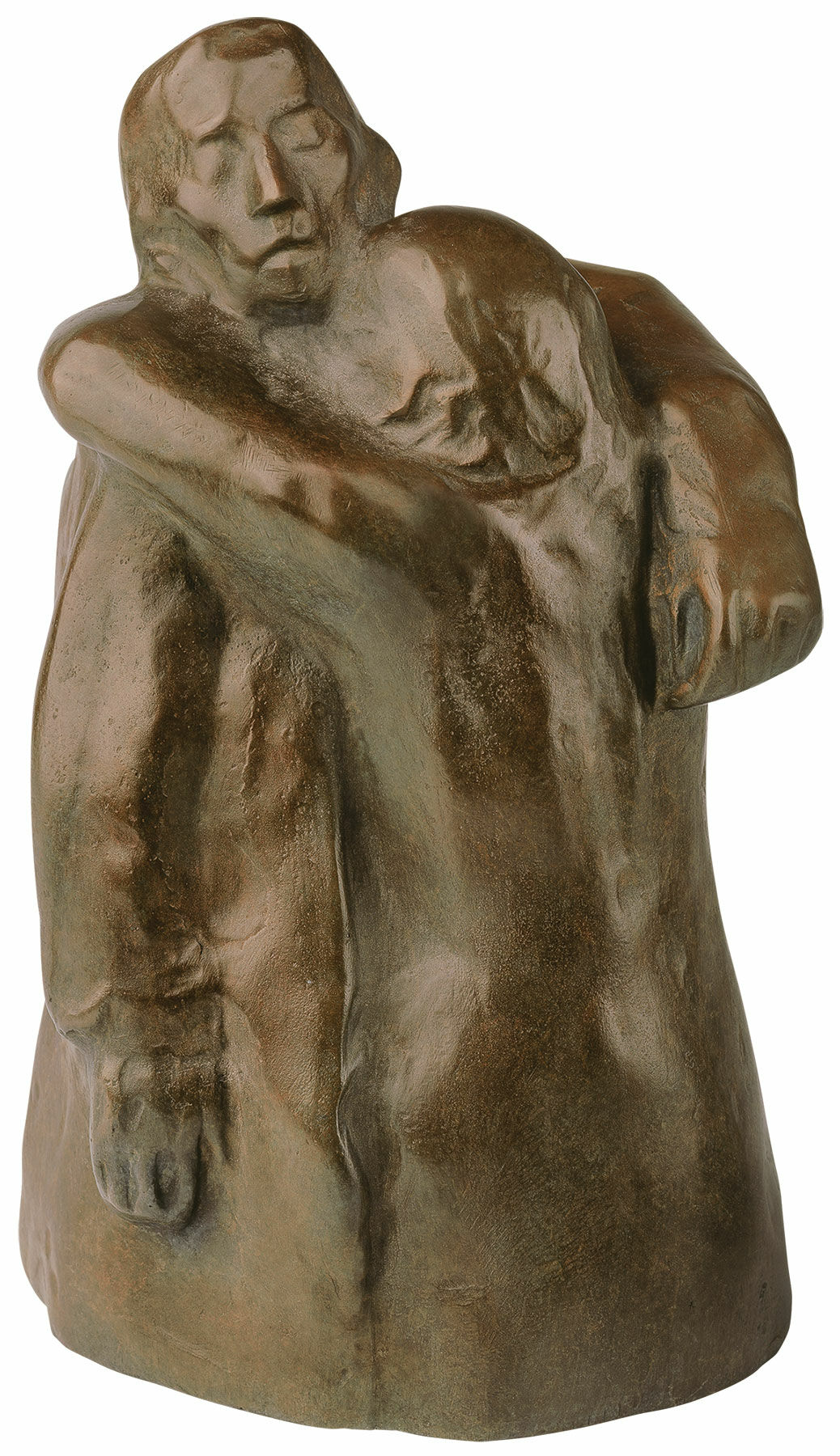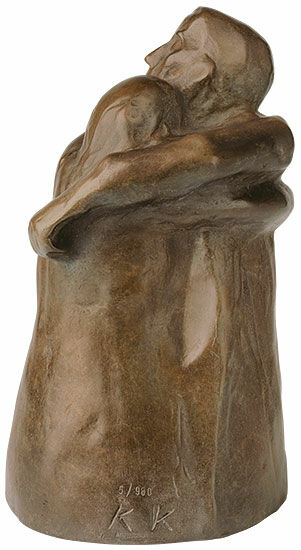Sculpture "Farewell" (1940/41), bronze
Sculpture "Farewell" (1940/41), bronze
Quick info
ars mundi Exclusive Edition | limited, 980 copies | numbered | signature | foundry hallmark | certificate | bronze | patinated | size 21 x 13.5 x 11.5 cm (h/w/d) | weight approx. 3.5 kg
Video
Detailed description
Sculpture "Farewell" (1940/41), bronze
Käthe Kollwitz (1867-1945) was often perceived as a social, even politically motivated artist. She repeatedly used her work to give the poor and the oppressed a voice. Kollwitz insisted on humanity even in inhumane times. That on its own was a political position. Her importance up to the present day, however, is based on the fact that she never worked in a striking way, but at the same time lent her figures an intimacy that virtually precludes viewing them as one-dimensional "symbols" or "examples".
The central work from her late career, "Farewell" from 1940/41, is another example of this. With this work, the artist processes the pain of the death of her partner of more than half a century, Karl Kollwitz, who died in 1940. The motif of the embrace can be found many times in Kollwitz's work. With this work, she shapes the embrace into an image of great closeness and intimacy at the moment of loss. It is a work of small gestures: while she is still clinging onto him, he detaches himself from her - it is a leaving, but also a letting go, perhaps also the moment of acceptance of the inevitable.
Sculpture in fine bronze, patinated. Cast by hand using the Lost-Wax-Process. Directly moulded from the original and enlarged. Limited edition of 980 copies, individually numbered and with the signature taken from the museum original as well as the foundry hallmark. With numbered certificate of authenticity and limitation. Size 21 x 13.5 x 11.5 cm (h/w/d). Weight approx. 3.5 kg. ars mundi Exclusive Edition.
About Käthe Kollwitz
The German graphic artist, painter and sculptor Käthe Kollwitz (1867, Königsberg – 1945, Moritzburg) is considered one of the most important women and artists of the 20th century. Käthe Kollwitz worked on themes that shaped her generation. This resulted in a large oeuvre of prints and drawings that dealt with both cheerful and negative subjects.
In 1898, she achieved a breakthrough with her etchings and lithographs at the great Berlin Art Exhibition. The artist made it her mission to draw attention to injustices and discrimination.
An alloy of copper with other metals (especially with tin) used since ancient times.
When casting bronze, the artist usually applies the lost-wax technique which is dating back more than 5000 years. It's the best, but also the most complex method of producing sculptures.
First, the artist forms a model of his sculpture. It is embedded in a liquid silicone rubber mass. Once the material has solidified, the model is cut out. The liquid wax is poured into the negative mould. After cooling down, the wax cast is removed from the mould, provided with sprues and dipped into ceramic mass. The ceramic mass is hardened in a kiln, whereby the wax flows out (lost mould).
Now we finally have the negative form, into which the 1400° C hot molten bronze is poured. After the bronze had cooled down, the ceramic shell is broken off and the sculpture is revealed.
Now the sprues are removed, the surfaces are polished, patinated and numbered by the artist himself or, to his specifications, by a specialist. Thus, each casting becomes an original work.
For lower-quality bronze castings, the sand casting method is often used which, however, does not achieve the results of a more complex lost-wax technique in terms of surface characteristics and quality.
Graphic or sculpture edition that was initiated by ars mundi and is available only at ars mundi or at distribution partners licensed by ars mundi.
A plastic work of sculptural art made of wood, stone, ivory, bronze or other metals.
While sculptures from wood, ivory or stone are made directly from the block of material, in bronze casting a working model is prepared at first. Usually, it is made of clay or other easily mouldable materials.
The prime time of sculpture after the Greek and Roman antiquity was the Renaissance. Impressionism gave a new impulse to the sculptural arts. Contemporary artists such as Jorg Immendorf, Andora, and Markus Lupertz also enriched sculptures with outstanding works.






